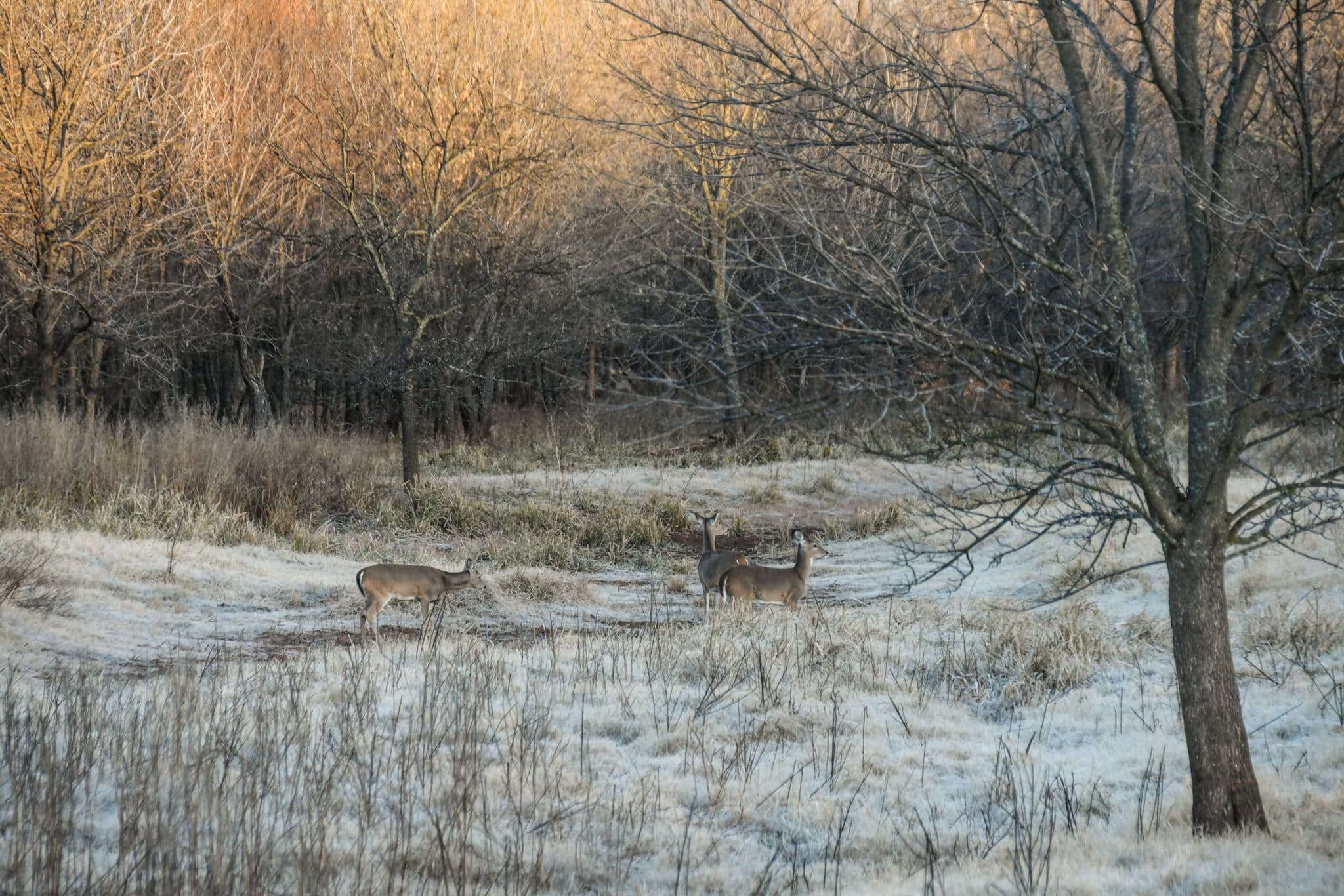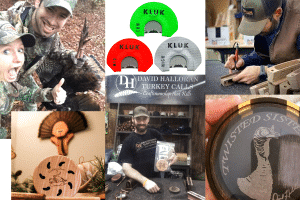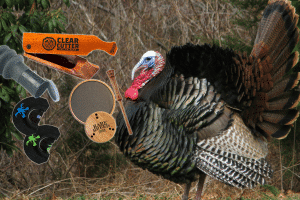
Turkey calling is hard. Let the pros help you out.
A major part of being a good turkey hunter is finding birds and then calling them in. Do that, and you can fill tags more often. But it’s no simple task. This requires serious effort to learn necessary skills.
Here are 15 turkey calling tips from the pros.
15 Turkey Calling Tips from the Pros
Aaron Warbritton, The Hunting Public
“Listen to real turkeys and not other turkey callers,” Warbritton said. “Listen to their cadence, pitch, inflection, excitement, and how all of that can change throughout the day for a turkey.”
Anthony Virga, Professional Turkey Caller
“Have a variety of calls that you can run comfortably,” Virga said. “From there, listen to real turkeys and do what they do. But you need to practice as much as you can.”
Art Helin, Own the Season TV
“Get good glass and waterproof box calls,” Helin said. “Turkeys don’t care what the weather is because they live in it. Also, during early season, call less. Play hard to get, and don’t overcall. Use a lot of soft clucks and purrs.”
Brenda Valentine, Professional Hunter
“Mimic whatever the hens are doing on that day,” Valentine said. “If they are mouthy and yelping every breath, then join in the yackety party. If it’s one of those days when the hens hardly make a peep, then do a few soft purrs and shut up. The key is to blend in and become part of the flock. Gobblers can spot an imposter quick if you call attention to yourself.”
Cody Kelley, Backwoods Life
“The hot birds that you hit in the perfect situation are easy,” Kelley said. “You yelp, they answer, you yelp, they’ve closed the distance, and boom. You enjoy those when they happen, but most of the time, it’s a game of them waiting for you to make the move. I feel that you must call enough to get them interested, but you win the game when they lose patience first. It’s amazing how soft hens yelp to communicate in the wild, and I always try to stay as soft as possible to keep his interest.”
Eddie Salter, The Turkey Man
“Learn to read turkeys,” Salter said. “If he likes it, I don’t think you can call too much. But learn when to put the call down. Also, learn to run two different calls sounding like two different hens.”
Jace Bauserman, Outdoor Writer
“I think too many people try to get too fancy on diaphragm calls,” Bauserman said. “Diaphragm calls are great. I love them, but picking a fight with a boss hen and mimicking her sounds exactly is easiest on a quality aluminum pot and peg. Match the vocality of turkeys in the area. Often, soft, subtle calling will get you further than yapping away. Also, don’t cut so much. Listen to live hens.”
Jordan Summit, Strutt Commander
“Pay attention to how the wild hens are calling,” Summit said. “Try to mimic them as close as you can. Calling softly at daylight is best. It takes a minute for them to wake up, just like us. Sometimes, we are still sleepy, and it takes a bit to get us excited in the morning. So, less is more, so to speak.”
Josh Carney, Son of the South
“I’ve learned that patience is key,” Carney said. “But find a mentor who has more experience than you do. If you take a moment and learn from other turkey hunters who have more experience, you will pick up tips and techniques to make you a better turkey hunter.”
Josh Dahlke, HuntStand
“I’ve hunted 20 states toward my Super Slam, and Gould’s in Mexico, and turkeys are turkeys,” Dahlke said. “The single biggest factor that affects turkeys and their willingness to talk is hunting pressure. Try to assess an area’s level of pressure and cater the aggression of your calling to the turkeys in that area. If they’ve seen little pressure, pour it on them. Have a good time with it. If they’re tight-lipped because they’ve been harassed all season, you’re probably better off with a more subtle approach. But just remember, it’s turkeys hunting, and everything can change at any second with the right (or wrong) gobbler.”
Mark Drury, Drury Outdoors
“Practice year-round and don’t wait until the season gets here,” Drury said. “There are a multitude of great training videos available on YouTube that show live hens calling. Practice cadence, volume control, and air control. Record yourself and listen to it back. Have others listen to it and critique. Try a variety of different calls until you find ones that suit your style the best. The more you surround yourself with good calling the better caller you will become. But it takes time and practice. It’s important to realize you don’t have to be a professional caller to kill turkeys. But by becoming the best caller, you can possibly kill more turkeys.”
Nate Hosie, HeadHunters TV
“For me it’s realism,” Hosie said. “Don’t call too loud, and add ups, downs, and changes in your tone and cadence. This helps add realism to your calling. I try to think of scenarios of hens I’ve called in and mimic them the best I can.”
Nick Mundt, Bone Collector
“Listen to a live turkey on YouTube, online, or in a pen, and try to mimic what you hear,” Mundt said. “Being able to copy the sounds with any call—mouth, pot, or box—will make you a better caller. As with any art, practice makes perfect. No one that’s good starts calling a day before the opener. Bug the heck out of your family and get ready for opening day.”
Check out our full interview with Michael Waddell of Bone Collector for more tips and tricks.
Randy Birdsong, HeadHunters TV
“Work your calling up into excitement and not vice versa,” Birdsong said. “So many times, callers come in too hot and may spook a gobbler before they even get a chance to work him. Start soft and easy and build your calling up as you read the temperature of your gobby.”
Scott Ellis, Professional Turkey Caller/Hunt Quest
“Become proficient on more than one type of device,” Ellis said. “Then, practice cadence and rhythm before tone. Once you’ve mastered turkey rhythm, then work on tone.”

























